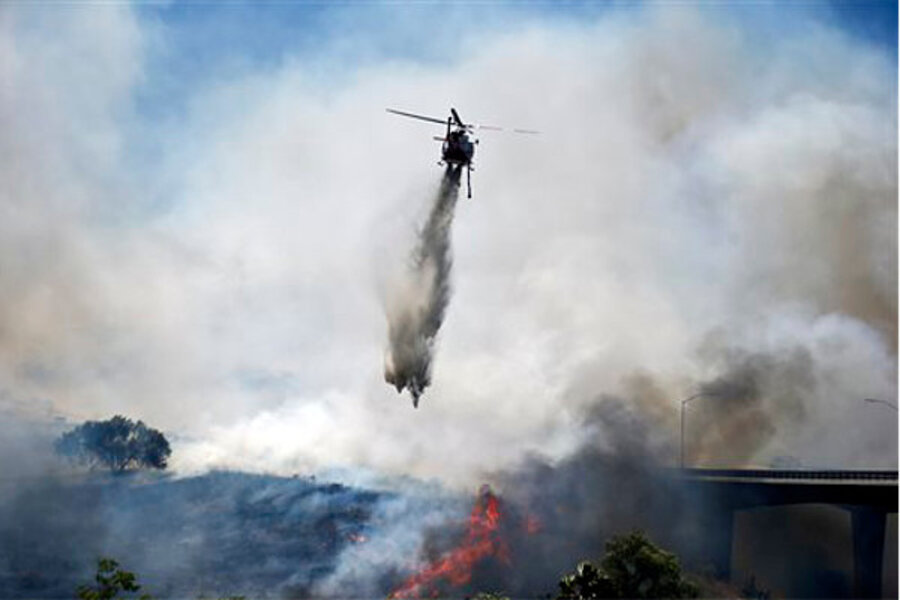California heat wave: Parched conditions feed a wildfire near San Diego
Loading...
| SAN DIEGO
A wildfire roaring through Southern California forced evacuation orders for more than 20,000 homes on Tuesday, but so far only one mobile home burned as a high-pressure system brought unseasonable heat and gusty winds to the parched state.
San Diego's Emergency Operations Center says most of the homes are in the city and northern San Diego County.
The 700-acre blaze erupted Tuesday morning, fueled by canyons full of brush and pushed by hot, dry winds. At least two high schools and one elementary school also were evacuated, police Detective Gary Hassen said.
Another fire destroyed a mobile home and prompted the evacuation of five homes in the rural town of Campo in southern San Diego County before it was largely surrounded, state fire Capt. Kendal Bortisser said.
North of Los Angeles, a wildfire erupted Tuesday afternoon in Santa Barbara County was quickly wind-whipped to 150 acres and it threatened 150 to 200 homes in the town of Lompoc, authorities said. Evacuations were ordered.
There were downed power lines and heavy brush in the area, said David Sadecki of the Santa Barbara County Fire Department.
A half-dozen other blazes statewide all remained small, said Daniel Berlant, a spokesman for the California Department of Forestry and Fire Protection.
Record high temperatures were likely through midweek from Southern California north to the regions around Monterey and San Francisco bays, the National Weather Service said. Downtown Los Angeles was 92 degrees at noon, 18 degrees above normal.
With the combination of high heat, low relative humidity, and the region's notoriously gusty Santa Ana winds, Los Angeles and neighboring cities activated parking restrictions in certain areas to make sure emergency vehicles could get through if fires erupted in dry brush.
Months of drought have left much of the landscape ready to burn. Downtown Los Angeles has recorded just 6.08 inches of precipitation with little time left in the July 1-June 30 rain year. That's less than half its annual average rainfall.
"Fire season last year never really ended in Southern California," Berlant said. His agency has responded to more than 1,350 fires since Jan. 1, compared to an average of 700 by this time of year.
Copyright 2014 The Associated Press. All rights reserved. This material may not be published, broadcast, rewritten or redistributed.







